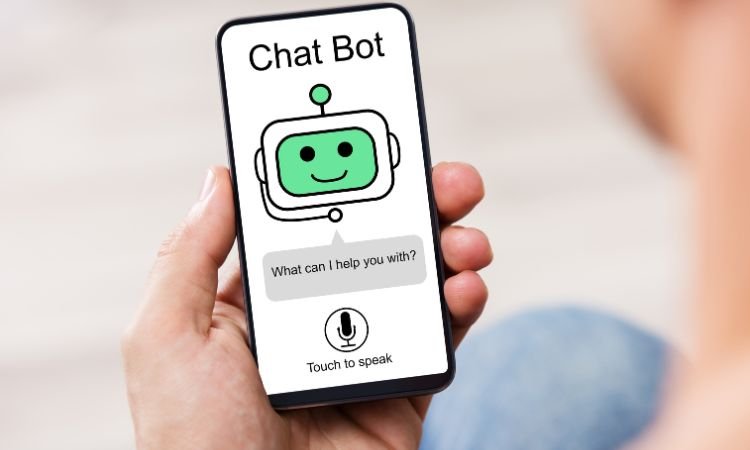The global chatbot market size stood at a value of around USD 839.33 million in 2024. The market is further expected to grow at a compound annual growth rate (CAGR) of 24.9% in the forecast period of 2025-2034, reaching a value of USD 6,210.48 million by 2034. Chatbots have evolved from simple automated systems to complex tools powered by artificial intelligence (AI) and machine learning. The growing demand for automation in customer service, marketing, and sales has significantly increased the adoption of chatbots across various industries. This blog post explores the current trends, market segmentation, regional growth, and key players in the global chatbot market, offering insights into what the future holds for this dynamic industry.
Market Overview
Chatbots are automated tools that facilitate communication between users and businesses, primarily used for customer support, marketing, and service automation. The rapid development of AI technologies, particularly in natural language processing (NLP) and machine learning, has greatly enhanced the capabilities of chatbots, enabling them to offer more intelligent, personalized, and seamless experiences for users.
The growing demand for cost-effective customer service, coupled with advancements in AI, is driving chatbot adoption across diverse sectors such as e-commerce, healthcare, banking, and telecommunications. The ability of chatbots to handle large volumes of inquiries, provide instant responses, and operate around the clock makes them an attractive solution for businesses seeking to improve efficiency while reducing operational costs.
Market Segmentation
Type: Standalone, Web-Based, Messenger-Based/Third Party
- Standalone Chatbots: These chatbots operate independently and are often integrated into specific platforms or applications to handle inquiries, customer support, and transactions. Standalone bots are increasingly popular in industries like e-commerce and finance, where automation can streamline routine tasks and improve efficiency. They are easy to deploy and customize, making them suitable for a wide range of business needs.
- Web-Based Chatbots: Web-based chatbots are integrated directly into websites, providing instant customer support and engagement. These chatbots are widely used in online retail, banking, and service industries to assist customers with inquiries, troubleshoot issues, and process orders. As businesses increasingly recognize the need for a strong online presence, web-based chatbots are becoming essential tools for improving the user experience on websites.
- Messenger-Based/Third-Party Chatbots: These chatbots are integrated into messaging platforms such as Facebook Messenger, WhatsApp, and other third-party applications. Messenger-based bots allow businesses to engage with customers directly through their preferred communication channels. These bots are particularly popular in the retail, entertainment, and social media sectors, where they can be used for marketing, customer service, and lead generation.
Product Landscape: Artificial Intelligence, Marketing, Human Intelligence
- Artificial Intelligence Chatbots: AI-powered chatbots use machine learning and NLP technologies to understand and respond to complex user queries. These bots can learn from interactions, continuously improving their ability to provide more accurate and relevant responses. AI chatbots are ideal for industries that require advanced customer support, such as finance, healthcare, and telecom. They can handle complex tasks like booking appointments, processing transactions, and troubleshooting technical issues.
- Marketing Chatbots: Marketing bots are designed to enhance customer engagement, generate leads, and provide personalized recommendations. They can interact with users in real time, offering product suggestions, sending promotional messages, and even managing ad campaigns. Marketing chatbots are widely used by businesses in retail and e-commerce to improve customer experience and drive sales.
- Human Intelligence Chatbots: These chatbots incorporate human intelligence in their design to offer more personalized and contextually accurate responses. While AI bots are great for handling standard queries, human intelligence chatbots can step in when more nuanced or complex interactions are required. This hybrid approach is becoming increasingly popular in industries such as healthcare and customer service, where human empathy and understanding are key to providing exceptional service.
Application: Bots for Service, Bots for Social Media, Others
- Bots for Service: Customer service bots are designed to provide instant assistance to users, whether answering questions, solving problems, or managing requests. These bots are widely deployed in industries like telecommunications, retail, and banking, where customer service is critical to business success. Service bots can be deployed across multiple channels, including websites, mobile apps, and messaging platforms, making them a versatile tool for businesses looking to improve customer satisfaction.
- Bots for Social Media: Social media bots are used by businesses to interact with users, promote products, and engage with audiences on platforms like Facebook, Instagram, Twitter, and LinkedIn. These bots can respond to comments, answer questions, and even manage social media campaigns. With social media becoming a key communication channel for businesses, the demand for social media bots is expected to increase significantly in the coming years.
- Others: Chatbots are also being used in specialized applications such as healthcare, education, travel, and entertainment. For instance, chatbots are increasingly being deployed in healthcare to provide medical information, book appointments, and manage patient inquiries. In education, chatbots are used to assist with student enrollment, provide tutoring, and answer academic-related questions.
End-Use
- Enterprise Use: Large enterprises are adopting chatbots to streamline operations, automate workflows, and enhance customer service. For instance, chatbots are being integrated into customer relationship management (CRM) systems to help businesses engage with customers more effectively. Enterprises are also using chatbots for internal communication and HR tasks, such as answering employee queries and managing schedules.
- Small and Medium Enterprises (SMEs): SMEs are increasingly turning to chatbots as a cost-effective solution for automating customer support, marketing, and sales functions. The availability of user-friendly chatbot platforms has made it easier for smaller businesses to implement chatbots without requiring extensive technical knowledge. SMEs in industries like retail, hospitality, and healthcare are leveraging chatbots to improve efficiency and customer engagement.
Regional Analysis
- North America: North America is one of the largest markets for chatbots, driven by the rapid adoption of AI technologies and the presence of leading technology companies. The U.S. and Canada are at the forefront of chatbot development and deployment, with businesses in sectors such as finance, retail, and healthcare leading the charge. The strong focus on digital transformation and customer experience will continue to drive market growth in the region.
- Europe: Europe is experiencing growing demand for chatbots, particularly in the retail, banking, and healthcare sectors. The region has seen significant advancements in AI and NLP, leading to the development of more sophisticated and intelligent chatbots. Countries like the UK, Germany, and France are expected to dominate the European chatbot market.
- Asia-Pacific: The Asia-Pacific region is witnessing rapid growth in chatbot adoption, driven by digitalization and increased internet penetration. Countries like China, India, Japan, and South Korea are at the forefront of chatbot deployment, with strong demand in sectors such as e-commerce, telecom, and customer service. The region is expected to experience the highest growth rate during the forecast period.
- Latin America: In Latin America, chatbot adoption is growing as businesses in the region look to enhance customer service and streamline operations. The increasing use of smartphones and internet access has driven the demand for messaging-based chatbots, especially in Brazil and Mexico.
- Middle East and Africa: The Middle East and Africa are emerging markets for chatbots, with increasing investment in digital transformation. Businesses in the UAE, Saudi Arabia, and South Africa are adopting chatbots to improve customer experience and streamline services. As more companies in the region recognize the benefits of automation, the chatbot market is expected to grow significantly.
Market Dynamics
Drivers of Market Growth
- Technological Advancements: AI, NLP, and machine learning technologies are making chatbots more intelligent and capable of handling complex interactions. The constant improvement of these technologies is driving the adoption of chatbots in various industries.
- Cost-Effectiveness: Chatbots offer businesses a cost-effective solution for handling customer support, sales, and marketing tasks. By automating routine functions, companies can reduce labor costs while improving efficiency.
- Demand for Automation: With businesses striving to improve efficiency, reduce response times, and enhance customer satisfaction, the demand for chatbot solutions is growing rapidly. Chatbots provide a means of automating tasks that were traditionally performed by human agents, freeing up resources for more critical tasks.
Challenges and Barriers
- Integration Complexity: Integrating chatbots with existing systems and platforms can be a complex task, especially for large enterprises with established workflows.
- Privacy and Security: As chatbots handle sensitive customer data, ensuring data security and privacy is a significant challenge. Businesses need to address these concerns to ensure trust in chatbot solutions.
- Limited Understanding of Complex Queries: While AI-powered chatbots are becoming more advanced, they still face challenges in understanding and responding to highly complex or ambiguous customer queries.
Competitive Landscape
- Key Players: Major players in the global chatbot market include companies like IBM, Microsoft, Google, and Facebook, who are leading the development of AI-powered chatbots. Smaller, specialized firms are also entering the market, offering unique and customized solutions tailored to specific industries.
- Strategies: Companies are adopting various strategies, such as partnerships, acquisitions, and product innovations, to expand their market share. The increasing competition is driving advancements in chatbot technology and opening new opportunities for businesses across sectors.










Leave a Reply